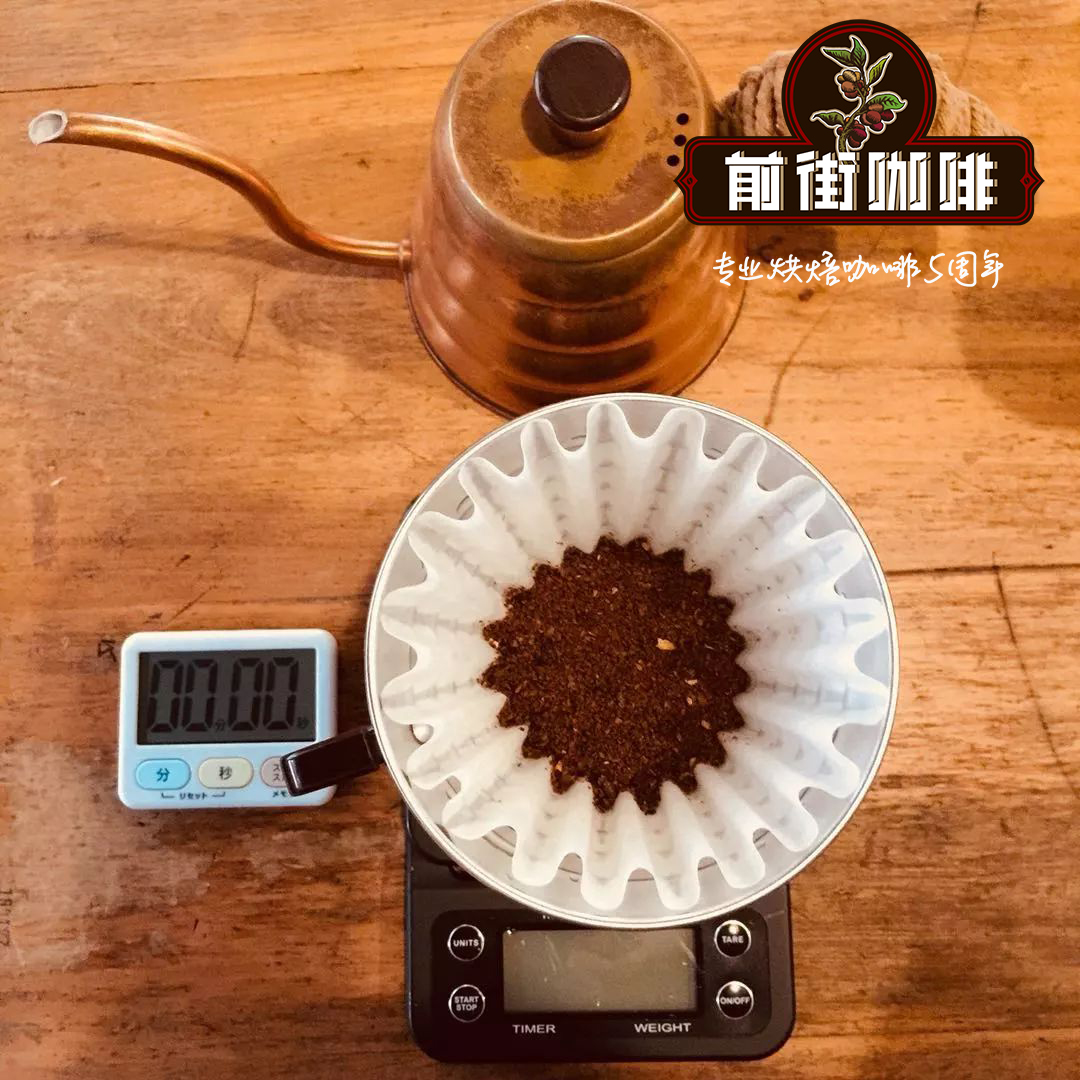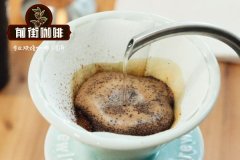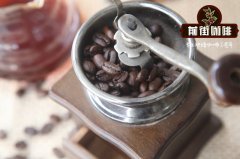Honey-treated coffee bean grading system _ are Costa Rican coffee beans treated with black honey?

Professional coffee knowledge exchange more coffee bean information please follow the coffee workshop (Wechat official account cafe_style)
After the coffee fruit has been planted and harvested by the manor, the next step is the 'post-processing method', which is the most important step in addition to the variety and planting land, while at present, most of the treatment methods are mainly sun exposure, semi-washing and water washing, and there are also several special treatments, honey treatment, and so on.
Each coffee treatment method has only one purpose, which is to peel and remove coffee beans, but due to different natural environmental conditions such as cost and climate, the processing process will not be the same. However, these treatments will also affect the flavor of subsequent coffee beans.
But the first thing you will experience before processing is to actually pick out the ripe fruit; there are two ways:
First, the use of color distinction: usually ripe fruit will be characterized by a red skin, at this time most of the sugar in the pectin layer has infiltrated into the fruit, which will greatly increase sweetness and aroma; in contrast, if the fruit is not ripe, it will contain a lot of chlorogenic acid and high concentration of citric acid, making the coffee fruit more sour.
Second, throw all the picked fruits into the sink: after manual screening, ripe and soon-to-mature fruits will sink to the bottom of the water, while immature and bad fruits will float. However, it is sometimes found that a large number of ripe fruits are pressed under the sink, so when using this method, we should still pay attention to the condition under the sink.
Sun treatment NATURAL PROCESS
Solarization, also known as' natural treatment', is usually used in countries where water is scarce, but in recent years it has also been used by some manors in pursuit of special flavor because of its unique flavor.
Spread the harvested coffee cherries directly together with the pulp and mucus layer in the bean drying field for natural drying, turn the coffee beans at any time to avoid partial dampness and cause mildew, and the time depends on the climate, about two to four weeks after the water content of the fruit is reduced to less than 12% and hardened, then use a sheller to remove the dried hard pulp and sheep skin from the coffee beans. This treatment is most afraid of mildew caused by rain and moisture, and it needs to be moved indoors every night to avoid excessive moisture.
The flavor of this kind of treatment has exclusive berry and wine flavor under the condition of moderate fermentation. No matter what cooking method is used, it can have a very beautiful flavor, but there is also a miscellaneous smell that is easy to show, which is a great test of the ability of bakers and bar players.
Process: screening floating beans, →, sun drying, → shelling.
Washing treatment method WASHED PROCESS
Water washing treatment can be divided into the following three general washing methods, Kenyan washing and Rwanda washing.
Water washing is a common method of raw bean treatment at present, but the cost of water is very high, so it is not suitable in some countries with backward water resources. The raw coffee treated by washing has the advantages of beautiful color, good appearance, high quality, sour flavor and brightness, and no miscellaneous flavor.
General washing method: after selecting the ripe fruit, move it to the pulp screening machine, followed by the most important water washing and fermentation treatment to remove the pectin layer; the causal gum layer is not easy to remove with water, so it is hydrolyzed by various bacteria in the water to decompose the resulting gelatine acid, during which it is necessary to constantly stir and rinse the raw coffee beans in the tank with water to speed up the pectin detachment from the pods. The time is about 12-36 hours, depending on the temperature and humidity, malic acid, citric acid, acetic acid, lactic acid, propionic acid will be naturally produced in the tank, and some sour elves will seep into the coffee beans at the same time; check the fermentation status in the tank at any time, check whether the pectin layer has fallen off, in order to avoid excessive fermentation to produce too much fatty acid and butyric acid and give off the stench; take out the coffee beans after washing and fermentation and enter the warehouse after drying.
Kenyan water washing: after starting the process with the general water washing method, first ferment naturally for 12 hours (mainly with a pH value of 4.5-4.8), then wash off 80%-90% pectin layer, clean it after natural fermentation for 24 hours, and then soak in water for 24 hours. Dry and then enter the warehouse.
Rwanda-style washing: after starting the process with the general water washing method, first ferment naturally for 12 hours, clean, soak in water for 24 hours, wash again, soak in water for 20 hours, dry and then enter the warehouse.
This kind of washing method makes coffee beans have clean and bright acidity, high water content, bright sour aroma, high sweetness and clean taste. It is easy to have more distinguishing layers, and it is easier to find the unique taste of coffee and the special flavor of the place of origin.
Process: screening of floating beans (same sun) → peeling, pulp → fermentation, pectin → solarization
Honey-treated SEMI-WASHED PULPED NATURAL
The so-called honey treatment is to remove the peel of the coffee cherry, leaving the sticky pulp, and then drying it. The difficulty of the honey treatment lies in the process of drying, because the sticky pulp layer is still on the coffee bean, it must be turned constantly with high frequency to avoid mildew caused by sticking between the pulp; and it needs to be dried in a short time to avoid excessive fermentation. For many of the above reasons, honey-treated coffee beans are prone to risk, which requires more manpower and time costs than other treatments.
The retention ratio of honey-treated coffee beans in pulp is divided into several honey treatments:
40% of the pulp 'yellow honey' is turned every 30 hours in the morning.
60% of the pulp 'Red Honey' is turned by 11am~12am every morning.
80% of the pulp 'black honey' is flipped at 3 p.m. Every day.
Basically, the more pulp is left, the sweetness will be enhanced, and the body will also be thicker. Generally speaking, honey treatment refers to yellow honey, while the more pulp left needs to be processed more carefully and more carefully. Black honey, such as over time, often has the flavor of excessive fermentation, so the risk is extremely high.
Honey treatment generally has a higher body size, a longer tail rhyme, has a good performance in the display of sweetness, and can even pull sweetness to the end of the rhyme, but it is more difficult to drink clean honey-treated coffee beans. the miscellaneous smell often floats out suddenly and then disappears, but as a whole it does not affect the appearance of the taste.
Process: screen floating beans (same sun) → peel (peel remove retained pectin layer mucilage) → with pectin layer exposure
Brand recommendation of honey treated coffee beans
The Costa Rican black honey-treated coffee beans roasted on Qianjie Coffee are fully guaranteed both in brand and quality. And more importantly, the performance-to-price ratio is extremely high, a pack of half a pound 227 grams, the price is only about 95 yuan. According to the calculation of 15 powders per cup of coffee, 15 cups of coffee can be made in a bag, which costs only about 6 yuan per cup, which is very cost-effective for coffee shops to sell dozens of yuan a cup.
Qianjie coffee: Guangzhou bakery, the store is small but a variety of beans, you can find a variety of unknown beans, but also provide online store services. Https://shop104210103.taobao.com
Important Notice :
前街咖啡 FrontStreet Coffee has moved to new addredd:
FrontStreet Coffee Address: 315,Donghua East Road,GuangZhou
Tel:020 38364473
- Prev

Why do Costa Rican coffee beans have honey treatment _ honey treatment coffee with sugar?
Professional coffee knowledge exchange more coffee bean information Please pay attention to the coffee workshop (Wechat official account cafe_style) when buying coffee, have you ever paid attention to the treatment of coffee beans? Or is it just the way to order an American or latte in the coffee shop? If you are drinking coffee in this way, you must not know how to taste it. You might as well order a cup of fine coffee next time and see how the coffee is produced.
- Next

Taste difference between coffee red honey treatment and black honey treatment _ how much is a packet of coffee beans treated with honey
Professional coffee knowledge exchange more coffee bean information Please follow the coffee workshop (Wechat official account cafe_style) individual coffee has become increasingly popular in recent years, and more and more people will make their own coffee at home, while choosing and buying coffee beans, they always see confusing terms such as washing, sun exposure, honey treatment and other confusing terms on the packaging, these different treatment methods
Related
- What is the meaning of lactic acid fermentation with coffee bean treatment?
- How to judge the state of foam by sound?
- How does the latte pull out the unicorn pattern? Come to get for a little trick to improve the flower pull!
- Will flower pulling affect the taste of the latte?
- Do you know the history of coffee?
- The difference between honey treatment and sun washing what is raisin honey treatment?
- What kind of milk can a novice use to make coffee foam to keep the foam longer? The correct method and skills of milking tutorial sharing
- Why do washed coffee beans taste sour? Flavor characteristics of washed Coffee
- Introduction to the skill of how to practice the size and height of water injection around the circle of hand-brewed coffee
- How do beginners practice coffee flower drawing from scratch?

